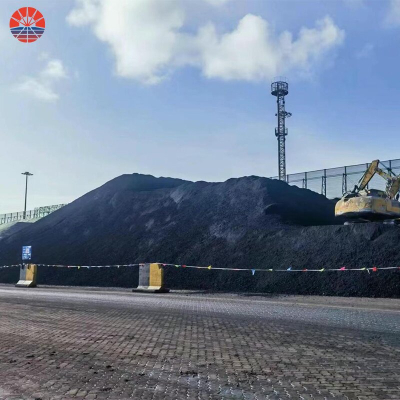What's The Ferrosilicon Usage In Ferroalloy Production
Ferrosilicon plays a significant role in the production of other ferroalloys. Ferroalloys are a group of alloys composed primarily of iron and one or more other elements. These alloys are used as additives in steelmaking and other metallurgical processes to impart specific properties to the final product. Here are some key uses of ferrosilicon in ferroalloy production:
Ferromanganese production: Ferromanganese is an alloy composed of iron, manganese, and small amounts of carbon and silicon. Ferrosilicon is used in the production of ferromanganese as a source of silicon. During the production process, ferrosilicon is mixed with manganese ore and carbon-rich materials, such as coke or coal. In the smelting process, silicon from ferrosilicon combines with manganese and other elements to form ferromanganese. Ferromanganese is used as a deoxidizer and alloying agent in steelmaking to enhance the steel's strength and toughness.
Ferrochrome production: Ferrochrome is an alloy of iron and chromium, and it is essential in stainless steel production. In the production of ferrochrome, ferrosilicon is used as a reducing agent to separate chromium from chromium ore (chromite). The smelting process involves the mixture of chromite ore, ferrosilicon, and other additives. The heat generated in the furnace reduces the chromite, and the silicon from ferrosilicon reacts with the oxygen in the chromite to produce silicon dioxide (slag). The reduced chromium then combines with iron to form ferrochrome.
Silicomanganese production: Silicomanganese is an alloy composed of iron, manganese, and silicon. Ferrosilicon is one of the key sources of silicon used in the production of silicomanganese. It is combined with manganese ore and carbon-rich materials in the smelting process to produce the alloy. Silicomanganese is used as a deoxidizer and alloying agent in steelmaking, similar to ferromanganese, but it also provides additional silicon content to the steel.
Ferrosilicon production itself: Ferrosilicon can also be produced as a standalone ferroalloy without being used as an input in other ferroalloy production processes. As explained in a previous response, ferrosilicon is produced through the carbothermic reduction of quartz (silica) and iron oxides in an electric arc furnace or a submerged arc furnace.
The usage of ferrosilicon in ferroalloy production allows steelmakers to customize the properties of steel and other alloys to meet specific industry requirements. By controlling the proportions of different ferroalloys, steel manufacturers can achieve the desired strength, corrosion resistance, and other characteristics in the final steel products.
What's The Benefit To Using Ferrosilicon In Ferroalloy Production
The use of ferrosilicon in ferroalloy production offers several significant benefits, making it a crucial and widely used additive in the metallurgical industry. Some of the key advantages include:
Silicon content: Ferrosilicon is a rich source of silicon, which is an essential element in the production of various ferroalloys. Silicon provides specific desirable properties to the final alloy, such as increased strength, hardness, and resistance to corrosion and oxidation.
Deoxidation: Ferrosilicon acts as a powerful deoxidizer in many ferroalloy production processes. During smelting, it reacts with oxygen and other impurities, such as sulfur and phosphorus, in the raw materials to form oxides and volatile compounds. This process reduces the oxygen content in the alloy, preventing the formation of undesirable oxides and improving the quality of the final product.
Alloying element: In some ferroalloy production processes, ferrosilicon acts as a key alloying element, contributing to the overall composition and desired properties of the alloy. By adjusting the silicon content in ferrosilicon, manufacturers can tailor the alloy's characteristics to meet specific industrial requirements.
Grain refinement: The presence of ferrosilicon in certain ferroalloys can lead to grain refinement in the final product. This results in improved mechanical properties, such as increased toughness and strength. Grain refinement is particularly beneficial in applications where fine microstructures are desired.
Cost-effectiveness: Ferrosilicon is often more cost-effective than using pure silicon in ferroalloy production. It allows for the controlled addition of silicon to the alloy, reducing the need for expensive silicon additives.
Nodularization: In the production of nodular or ductile iron, ferrosilicon is used as a nodulizer to form graphite nodules within the iron matrix. This imparts superior mechanical properties, making the ductile iron more ductile and less brittle compared to traditional grey cast iron.
Versatility: Ferrosilicon can be used in the production of various ferroalloys, such as ferromanganese, ferrochrome, silicomanganese, and others. Its versatility makes it a widely used and essential additive in metallurgical processes.
Overall, the usage of ferrosilicon in ferroalloy production brings numerous advantages, including enhanced properties, improved product quality, and cost efficiency. Its ability to serve as a deoxidizer, alloying element, and nodulizer makes it a valuable component in the production of different ferroalloys, contributing to the advancement and diversification of various industries.
Specification
Quality inspection certificate of finished product | |||
Product name | Ferro Silicon | Batch No. | ZC2023-06-13 |
Sampling Site | / | Product specifications | / |
Acceptance date | 2023.06.13 | Report date | 2023.06.14 |
Test items | SH/T 0313-92 | Test results | |
Appearance | This product should be black solid | ||
Si | 75.32 | ||
c | 0.11 | ||
P | 0.03 | ||
s | 0.014 | ||
A1 | 0.77 | ||
Conclusion | Product conforms to specification. | ||








